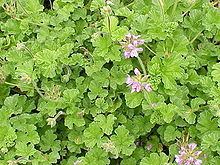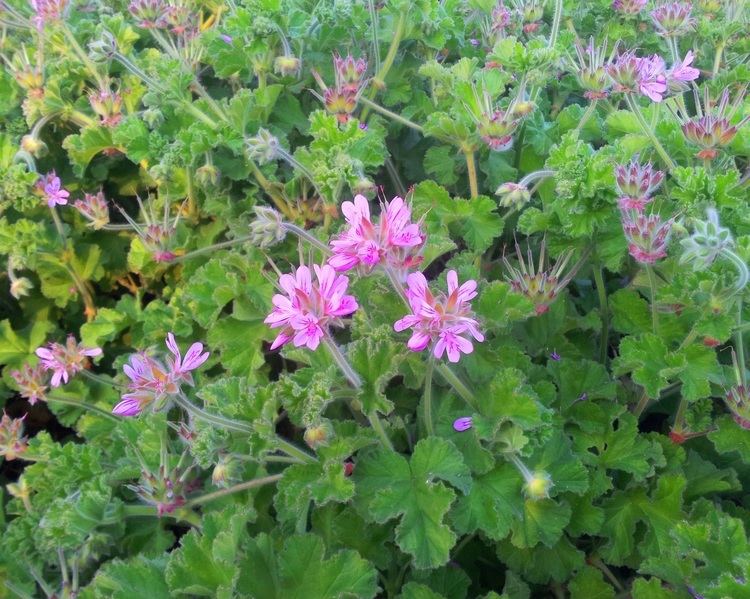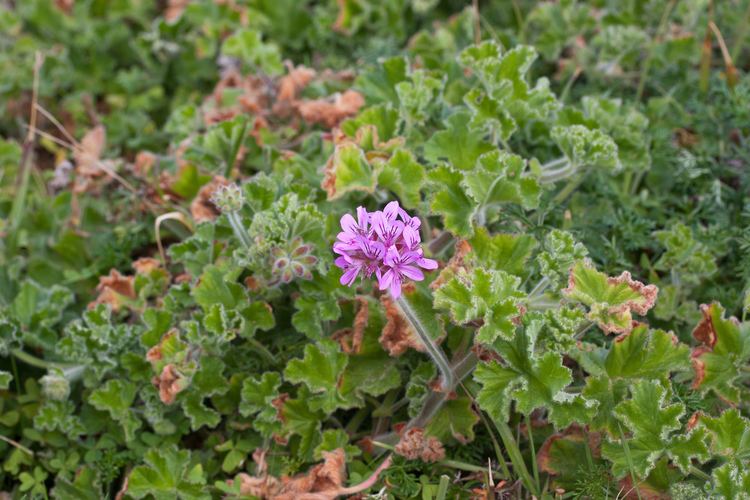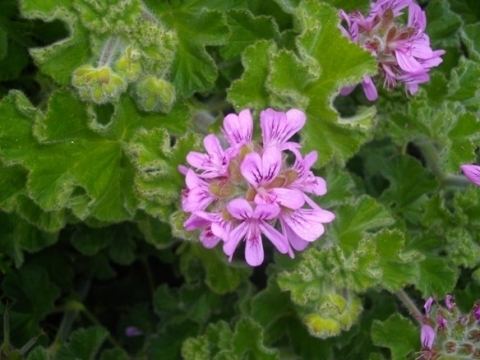Scientific name Pelargonium capitatum | Genus Pelargonium Rank Species | |
Similar Pelargonium radens, Pelargonium crispum, Pelargonium tomentosum, Pelargonium odoratissimum, Pelargonium quercifolium | ||
Pelargonium capitatum is one of several species (including Pelargonium graveolens) known as rose geranium or rose-scented pelargonium in English. The popular names refer to the scent of the essential oils extracted from glandular tissue, not the flowers, which have hardly any scent to speak of. Some of the species are known as kusmalva (meaning, roughly, "coastal geranium") in Afrikaans. It is found in fynbos along the coast of South Africa, from Lamberts Bay in the Western Cape east to Kwazulu-Natal. It is a popular and convenient ornamental plant and it also is one of the species of Pelargonium cultivated as a source of essential oils.
Contents

'It is in the subgenus Pelargonium along with Pelargonium graveolens and Pelargonium tomentosum.
Etymology
Pelargonium comes from the Greek pelargos, which means stork. Another name for pelargoniums is storksbills due the shape of their fruit. The epithet capitatum refers to the head-shaped flowers leaves.
Description

Pelargonium capitatum is a low shrub up to about 100 cm (39 in) in height and 1.5 m across. The stems are soft and coated in green, glandular hairs. Brushing against a bush releases a copious scent of the essential oil from damaged hairs. The scent varies from faint sweetness to a strong rosy scent. The flowers range from white through various shades of pink to purple. Its preferred habitat is on sand dunes, but it is a fast grower on any reasonable base, including hard clayey soil, so it readily colonises disturbed habitat. Pelargonium capitatum is one of a number of related plants that have become a major problem in coastal regions of southwest Western Australia, where it invades banksia woodland and coastal heathland. It can be easily propagated from seed or cuttings, and grows best in well drained sandy soils.
Cultivars and hybrids

There are many cultivars and hybrids of Pelargonium capitatum as it hybridises readily with other species in the pelargonium subgenus. These cultivars and hybrids include:

